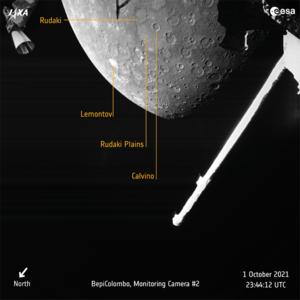Accept all cookies Accept only essential cookies See our Cookie Notice

About ESA
The European Space Agency (ESA) is Europe’s gateway to space. Its mission is to shape the development of Europe’s space capability and ensure that investment in space continues to deliver benefits to the citizens of Europe and the world.
Highlights
ESA - United space in Europe
This is ESA ESA facts Member States & Cooperating States Funding Director General Top management For Member State Delegations European vision European Space Policy ESA & EU Space Councils Responsibility & Sustainability Annual Report Calendar of meetings Corporate newsEstablishments & sites
ESA Headquarters ESA ESTEC ESA ESOC ESA ESRIN ESA EAC ESA ESAC Europe's Spaceport ESA ESEC ESA ECSAT Brussels Office Washington OfficeWorking with ESA
Business with ESA ESA Commercialisation Gateway Law at ESA Careers Cyber resilience at ESA IT at ESA Newsroom Partnerships Merchandising Licence Education Open Space Innovation Platform Integrity and Reporting Administrative Tribunal Health and SafetyMore about ESA
History ESA Historical Archives Exhibitions Publications Art & Culture ESA Merchandise Kids Diversity ESA Brand Centre ESA ChampionsLatest
Space in Member States
Find out more about space activities in our 23 Member States, and understand how ESA works together with their national agencies, institutions and organisations.
Science & Exploration
Exploring our Solar System and unlocking the secrets of the Universe
Go to topicAstronauts
Missions
Juice Euclid Webb Solar Orbiter BepiColombo Gaia ExoMars Cheops Exoplanet missions More missionsActivities
International Space Station Orion service module Gateway Concordia Caves & Pangaea BenefitsSpace Safety
Protecting life and infrastructure on Earth and in orbit
Go to topicAsteroids
Asteroids and Planetary Defence Asteroid danger explained Flyeye telescope: asteroid detection Hera mission: asteroid deflection Near-Earth Object Coordination CentreSpace junk
About space debris Space debris by the numbers Space Environment Report In space refuelling, refurbishing and removingSafety from space
Clean Space ecodesign Zero Debris Technologies Space for Earth Supporting Sustainable DevelopmentLatest
Applications
Using space to benefit citizens and meet future challenges on Earth
Go to topicObserving the Earth
Observing the Earth Future EO Copernicus Meteorology Space for our climate Satellite missionsCommercialisation
ESA Commercialisation Gateway Open Space Innovation Platform Business Incubation ESA Space SolutionsLatest
Enabling & Support
Making space accessible and developing the technologies for the future
Go to topicBuilding missions
Space Engineering and Technology Test centre Laboratories Concurrent Design Facility Preparing for the future Shaping the Future Discovery and Preparation Advanced Concepts TeamSpace transportation
Space Transportation Ariane Vega Space Rider Future space transportation Boost! Europe's Spaceport Launches from Europe's Spaceport from 2012Latest

Lava and debris brighten Mercury's surface
Thank you for liking
You have already liked this page, you can only like it once!
This is one of a series of images taken by the ESA/JAXA BepiColombo mission on 8 January 2025 as the spacecraft sped by for its sixth and final gravity assist manoeuvre at the planet.
Monitoring camera 2 (M-CAM 2) took this photo at 07:17 CET, when the spacecraft was about 2103 km from the planet’s surface. The spacecraft’s closest approach of 295 km took place on the planet's night side at 06:59 CET.
The bright patch near the planet's upper edge in this image is the Nathair Facula, the aftermath of the largest volcanic explosion on Mercury. At its centre is a volcanic vent of around 40 km across that has been the site of at least three major eruptions. The explosive volcanic deposit is at least 300 km in diameter.
Nathair Facula is a major target for several BepiColombo instruments, which will measure the composition of the erupted material. This will teach us about what Mercury is made of, and how the planet formed.
Also visible is the relatively young Fonteyn crater, which formed a ‘mere’ 300 million years ago. Its youth is apparent from the brightness of the impact debris that radiates out from it. Older material on Mercury's surface has become much darker from weathering as it aged.
Rustaveli, seen roughly in the centre of Mercury in this image, is about 200 km in diameter. Within its rim is a ring of peaks, making it a so-called peak ring basin. These peaks barely poke above smooth material on Rustaveli’s floor, which suggests the crater has been flooded by lava.
Interestingly, NASA’s Messenger spacecraft detected a magnetic signal coming from Rustaveli. When molten rock such as lava or impact melt solidifies, magnetic carriers within it align with the direction of the planet's magnetic field. As the planetary magnetic field naturally changes over time, eventually the 'locked in' magnetic field in the planet's crust no longer agrees with the planetary magnetic field, something that can be detected from space. BepiColombo's two magnetometer instruments will investigate this further.
In the foreground of the image, the Mercury Planetary Orbiter’s medium gain antenna (top centre) and magnetometer boom (right) are visible.
Click here for an annotated version of this image
[Technical details: This image of Mercury's surface was taken by M-CAM 2 onboard the Mercury Transfer Module (part of the BepiColombo spacecraft), using an exposure time of 4 millseconds. Taken from a distance of around 2103 km, the surface resolution in this photograph is around 2330 m/pixel. The image has been lightly processed; its brightness and contrast have been adjusted.]
[Image description: Planet Mercury in the background with its grey, cratered, pockmarked surface. In the foreground are some spacecraft parts.]
-
CREDIT
ESA/BepiColombo/MTM -
LICENCE
CC BY-SA 3.0 IGO or ESA Standard Licence
(content can be used under either licence)

Lava and debris brighten Mercury's surface (with labels)

Rustaveli crater on Mercury

Hello Mercury

Hello Mercury – annotated















 Germany
Germany
 Austria
Austria
 Belgium
Belgium
 Denmark
Denmark
 Spain
Spain
 Estonia
Estonia
 Finland
Finland
 France
France
 Greece
Greece
 Hungary
Hungary
 Ireland
Ireland
 Italy
Italy
 Luxembourg
Luxembourg
 Norway
Norway
 The Netherlands
The Netherlands
 Poland
Poland
 Portugal
Portugal
 Czechia
Czechia
 Romania
Romania
 United Kingdom
United Kingdom
 Slovenia
Slovenia
 Sweden
Sweden
 Switzerland
Switzerland

























